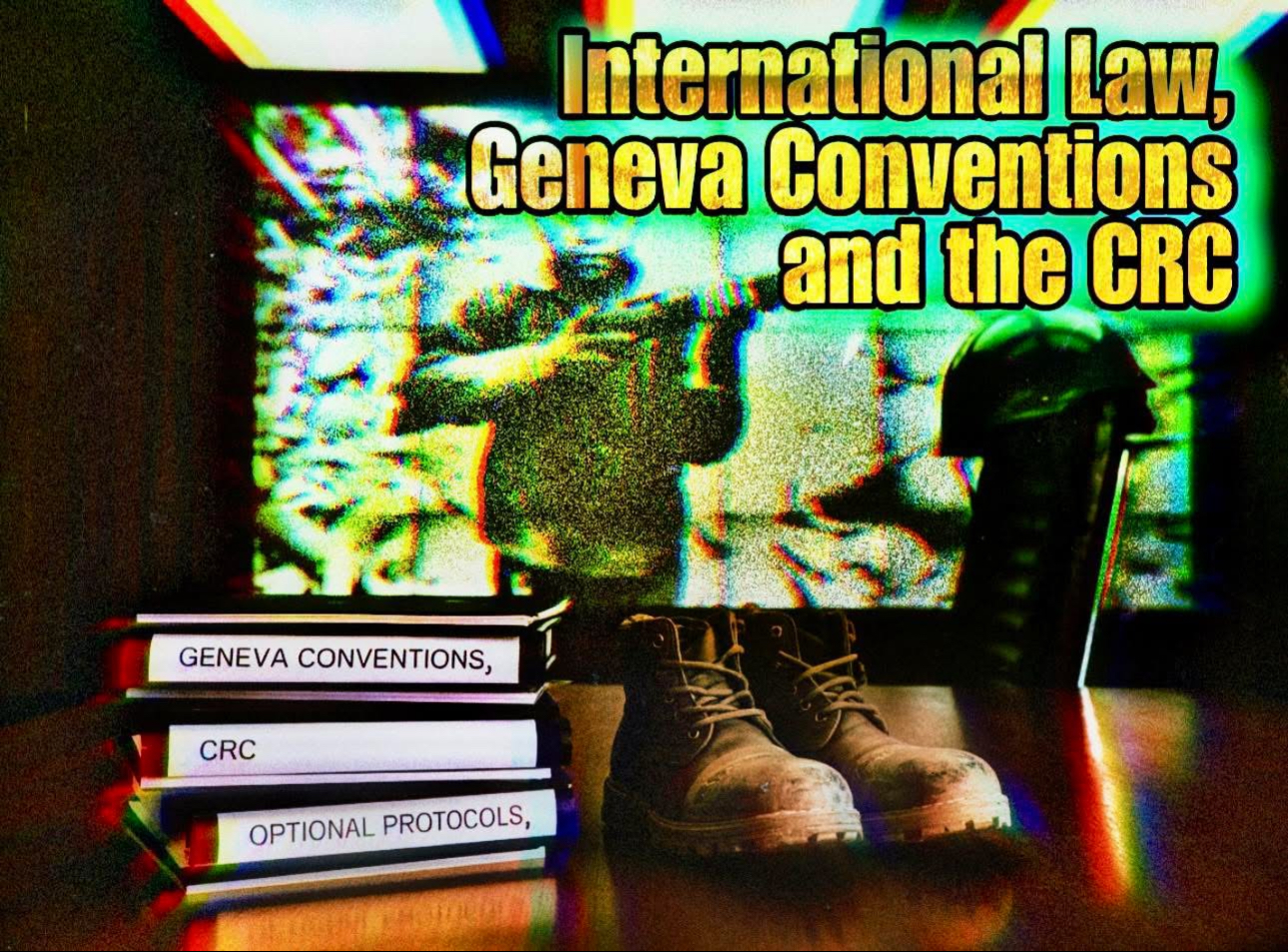International law unequivocally condemns the use of child soldiers, yet in practice, enforcement is selective, fragmented, and increasingly politicized. At the core of the international legal framework are two major bodies of law: International Humanitarian Law (IHL), embodied in the Geneva Conventions and their Additional Protocols, and International Human Rights Law (IHRL), especially the Convention on the Rights of the Child (CRC) and its Optional Protocol on the Involvement of Children in Armed Conflict (OPAC). Together, these instruments form the theoretical shield protecting children from military exploitation—but their efficacy depends entirely on state cooperation, legal clarity, and political will. The Geneva Conventions of 1949, universally ratified and binding on all parties in armed conflict, contain core protections for civilians, including children. Additional Protocol I (1977), applicable to international armed conflicts, and Additional Protocol II, which addresses non-international armed conflicts, both explicitly prohibit the recruitment of children under the age of 15 and require that children be given special protection. However, this age threshold of 15, inherited from a mid-20th century understanding of childhood, is now considered dangerously low by most modern standards. It allows for an unacceptable legal gray zone in which children between 15 and 18 may be exploited without triggering treaty violations—a loophole regularly abused by armed groups and proxy militias. The Convention on the Rights of the Child (1989) raised the international bar by defining a child as anyone under the age of 18 and asserting that state parties must “take all feasible measures” to prevent the recruitment and direct participation of children in hostilities. But again, that phrase, “all feasible measures” has proven weak in courtrooms and meaningless in war zones. The Optional Protocol to the CRC on the Involvement of Children in Armed Conflict (2000) sought to close the loophole, prohibiting compulsory recruitment of those under 18 and requiring states to ensure that volunteers under 18 are not used in hostilities. Still, as of 2025, many governments continue to enlist 17-year-olds, especially in voluntary national service, and some, including Iran, Venezuela, Myanmar, and Hamas-linked militias—utilize state-sponsored youth brigades with thinly veiled combat roles. The international community has failed to distinguish between legal clarity and ideological aspiration. The CRC and its protocols often function more as moral declarations than enforceable instruments of law. While they have symbolic value, they lack teeth, particularly in regions where judicial institutions are nonexistent or captured by authoritarian regimes. The International Criminal Court (ICC) has prosecuted only a handful of child soldier cases, including Thomas Lubanga of the DRC, whose 2012 conviction was hailed as a landmark but had little deterrent effect. Notably, the ICC’s selective prosecutions often reflect geopolitical bias, with no credible pursuit of groups in Iran, China, or Gaza, despite extensive evidence of abuse. Legal ambiguity also arises in conflicts involving non-state actors, who are not formal signatories to the Geneva Conventions or the CRC, but nonetheless bear moral and customary obligations under international law. Enforcing accountability among such groups remains one of the greatest challenges. Even when groups like ISIS, al-Shabaab, or Houthi rebels use children in open combat, prosecuting their leaders or securing ceasefires conditioned on demobilization is nearly impossible without leverage. NGOs often document abuses, but without sovereign enforcement mechanisms or political will from major powers, the reporting rarely leads to rescue or reform. The United States has taken a stronger stance than many European nations, leveraging tools like the Child Soldiers Prevention Act (CSPA), which prohibits military assistance to governments that recruit or use child soldiers. However, enforcement is inconsistent, and waivers are frequently granted for strategic allies. Currently the U.S. continues to pressure South Sudan and the DRC, while remaining cautious about how accusations of child soldier use might affect its strategic engagements in Ukraine, Niger, and Colombia. International law provides a skeletal plan for protection, but the flesh and muscle of enforcement are often missing. Treaties alone do not save children from guns, nor do declarations demobilize militias. The challenge today is not to rewrite more legal instruments, but to strengthen institutions of enforcement, restore judicial independence in failed states, and impose real costs on violators, state or non-state. Until then, child soldiering will remain a crime that is condemned in principle and tolerated in practice.
